Red columbine (
Aquilegia canadensis) is a bold, upright perennial that grows in dry, well-drained soil in partial shade or full sun. Its bright red flowers, which open in May, are an excellent source of nectar and often coincide with the arrival of the first migrating hummingbirds. It’s quite difficult for pollinating insects to access the nectar, however, but you may observe the occasional bumblebee.
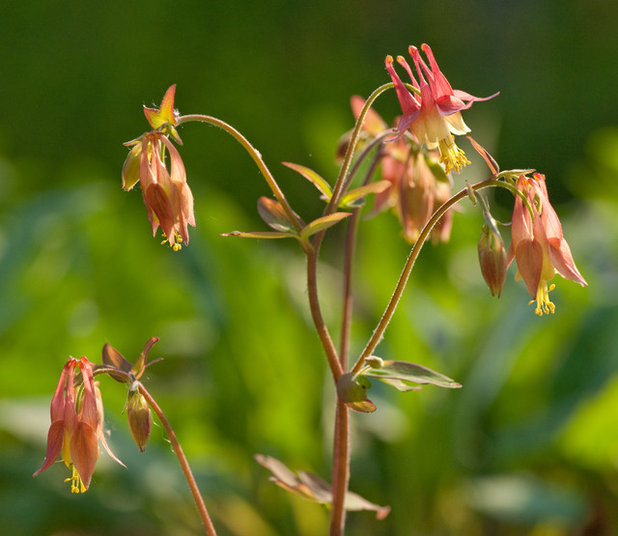
Holm Design & Consulting LLC
Botanical name: Aquilegia canadensisCommon names: Red columbine, wild columbine or Canada columbine
Origin: Native to eastern North America from the Dakotas eastward to Maine in the north, and Texas eastward to Georgia in the south; native in Canada from Saskatchewan eastward to Nova Scotia
Where it will grow: Hardy to minus 40 degrees Fahrenheit, or minus 40 degrees Celsius (USDA zones 3 to 7; find your zone)
Typical plant communities: Dry woodland edges or rocky openings
Water requirement: Needs no additional watering once established
Light requirement: Partial shade to full sun
Mature size: 1 foot to 2 feet tall and 1 foot wide
Benefits and tolerances: Tolerates dry conditions; attracts hummingbirds
Seasonal interest: Blooms in May in upper Midwest and earlier southward
When to plant: Spring or fall; potted plants or seeds available from most native plant nurseries in areas where it occurs
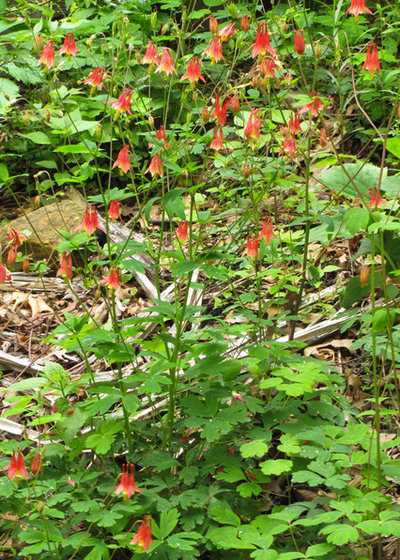
Holm Design & Consulting LLC
Distinguishing traits. Red columbine is one of just a handful of plants native to eastern North America with red flowers. This plant has a sturdy, upright form; beautiful, softly lobed foliage; airy flower stalks; and pendulous flowers.
This hummingbird-pollinated plant historically flowers in a particular area around the time when ruby-throated hummingbirds (
Archilochus colubris) pass northward on their migration.
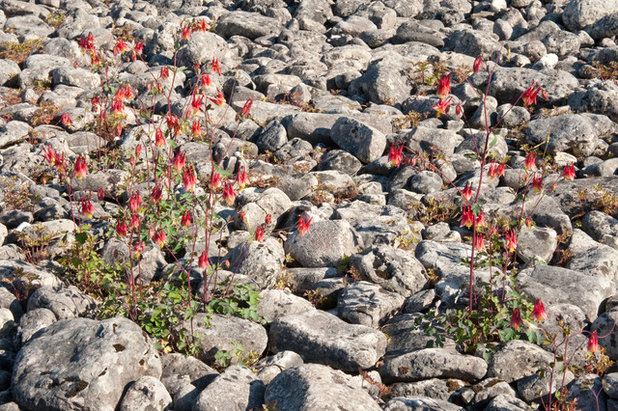
Holm Design & Consulting LLC
How to use it. Plant red columbine in clusters or masses for best effect, in the middle of a perennial border, naturalized along the edge of a woodland or partially shaded understory, or featured in a rock garden.
Combine it with native perennials that also thrive in well-drained soil and partial shade, including golden Alexanders (
Zizia aurea) and
foxglove beardtongue (
Penstemon digitalis).
Throughout its range in eastern North America, red columbine grows in a wide variety of habitats. This population was growing out of limestone rocks on the shore of Lake Huron.
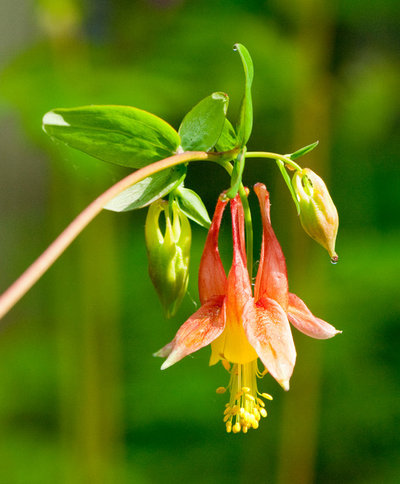
Holm Design & Consulting LLC
Planting notes. Red columbine is a short-lived perennial that readily reseeds in dry, well-drained sand to loam soil. Collect the shiny black seeds when the upright pods dry and on the verge of splitting open. Broadcast the seeds in the fall in the same area as the existing plants to ensure that a dense population returns the following season. Alternatively, broadcast them in a new area where there is adequate bare soil.
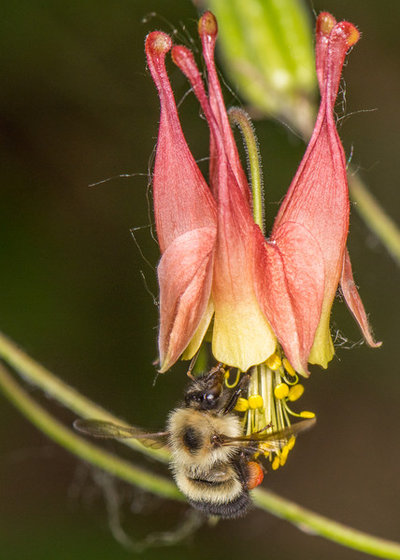
Holm Design & Consulting LLC
Pollinator notes. Red columbine flowers produce nectar in the nectaries located at the top of each of the five flower spurs. Accessing the nectar requires a pollinator with a long tongue, and few bees, except for some bumblebee species like this common eastern bumblebee (
Bombus impatiens),
can access the nectar. This leaves a large quantity of nectar for hummingbirds, which have adequately sized tongues for the job.
Pollinating insects that can’t reach the nectar will steal it by chewing a hole near the nectary. Worker bumblebees can be observed visiting the flowers to collect pollen.
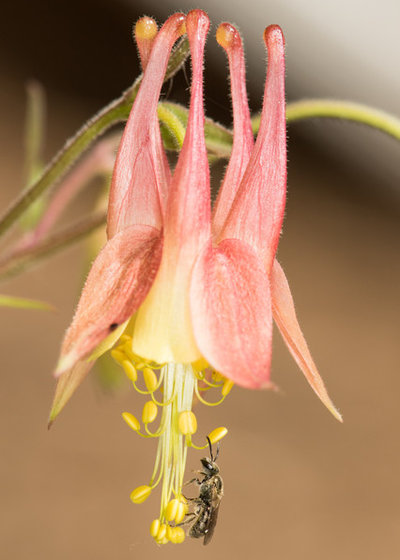
Holm Design & Consulting LLC
A small sweat bee (
Lasioglossum sp.) climbs up the flower’s anthers to access nectar in the spurs.
Other recommended species. For gardeners who live outside red columbine’s range, consider the native columbines below.
- Colorado blue columbine (A. caerulea): Blue-and-white flowering columbine native to the Rocky Mountains
- Golden columbine (A. chrysantha): Yellow flowering columbine native to the Southwest
- Western columbine (A. formosa): Red-and-yellow flowering columbine native to the West Coast, from California north to Alaska
Browse more native plants by region





